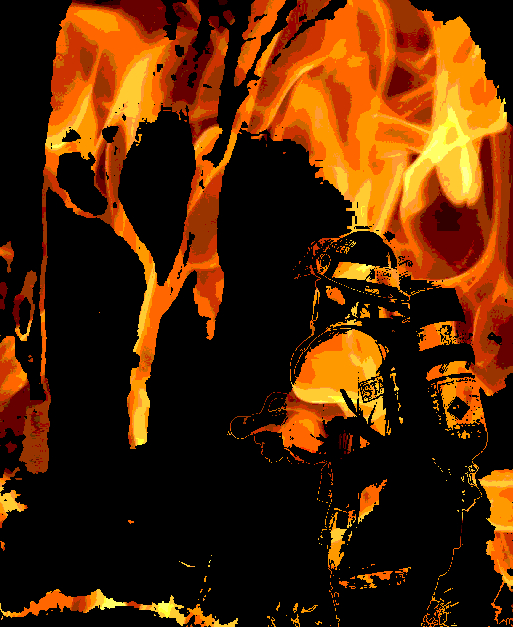Fiskville findings could set up better system
 A parliamentary inquiry is looking at claims that lives were put in danger at the Fiskville fire-fighters training centre in Victoria, after reports of a cancer cluster among former workers.
A parliamentary inquiry is looking at claims that lives were put in danger at the Fiskville fire-fighters training centre in Victoria, after reports of a cancer cluster among former workers.
The inquiry comes at the same time as a new Cancer Council report, which says work-related cancers are wildly underreported.
In the Fiskville inquiry, former staff and fire-fighting trainees have described their repeated exposure to a range of harmful chemicals.
Diane Potter, the widow of former Country Fire Authority (CFA) chief officer Brian Potter, said the CFA had been told as early as 1991 about the risks of chemical contamination at the training centre.
Ms Potter said a doctor warned the CFA, saying people living and working at Fiskville should be informed.
This did not happen, and Ms Potter says it was a cover-up.
“The hardest part for me is to find out, when the story went to the media, that the CFA in 1991 had been told to warn people who lived at Fiskville that they have been exposed to dangerous chemicals,” she said.
“To think that somewhere, the powers that be had hidden that information. It may not have saved my beautiful man or our other friends who were living there who have either died or been very sick, but no one had the right to withhold that information.”
Mr Potter lived at the site for several years before battling serious illness that eventually took his life.
His wife explained that Mr Potter had written to authorities decades earlier about concerns that the chemicals being used at the site could be dangerous, after reading reports from similar facilities in the US.
He did not receive a letter back, but the inquiry has been shown a draft reply letter - which was never sent - saying everything was fine.
On the top of the reply the words “be careful” were hand-written.
The inquiry opened with testimony from Monash University researcher Professor Malcolm Sim who worked on a report on the rates of cancer among more than 600 people at the site between 1971 and 1999.
The study found a higher incidence of melanoma and cancer of the testes in those deemed to have high risk of exposure (to materials including flammable chemicals, combustion products, foams and recycled firewater), and a higher incidence of brain cancer in the medium risk of exposure group.
Of the 606 people examined, 69 developed cancer and 16 had died.
A report from the Cancer Council indicates the true toll could be higher, as it shows claims for compensation for workplace cancers are vastly underreported, and rarely compensated.
Chair of the Cancer Council's Occupational and Environmental Cancers Committee, Terry Slevin, says there are some complicated factors when linking cancer and its cause.
“First we don't know what causes all of cancer,” he said in an interview for the ABC.
“We know what causes between and third and a half, depending on whose estimate you believe. But there's also the time gap between when the exposure occurs and when the cancer occurs.
“So someone diagnosed today, for example, with skin cancer is likely to have got their sun exposure that contributed to that skin cancer some decades ago.
“So there isn't always that clear and obvious link... where there's doubt, people tend not to pursue compensation,” Slevin said.
The Cancer Council estimates there are 5,000 new cancer cases linked to the workplace every year, but only about 400 claims are made.
“Compensation systems at the moment over a period of 2000 to 2012 have paid out $360 million, so roughly $30 million a year,” he said.
“And that's a very small drop in the bucket when compared with total compensation paid over that same period of time - a total of $54 billion has been paid out in occupational compensation claims of various kinds.
“I think [$360 million paid out over ten years] is the tip of the iceberg of what might potentially be due to people as a result of exposures.
“The challenge is to put better systems in place to ensure that those who may have a legitimate claim get a chance to pursue that.”








 Print
Print